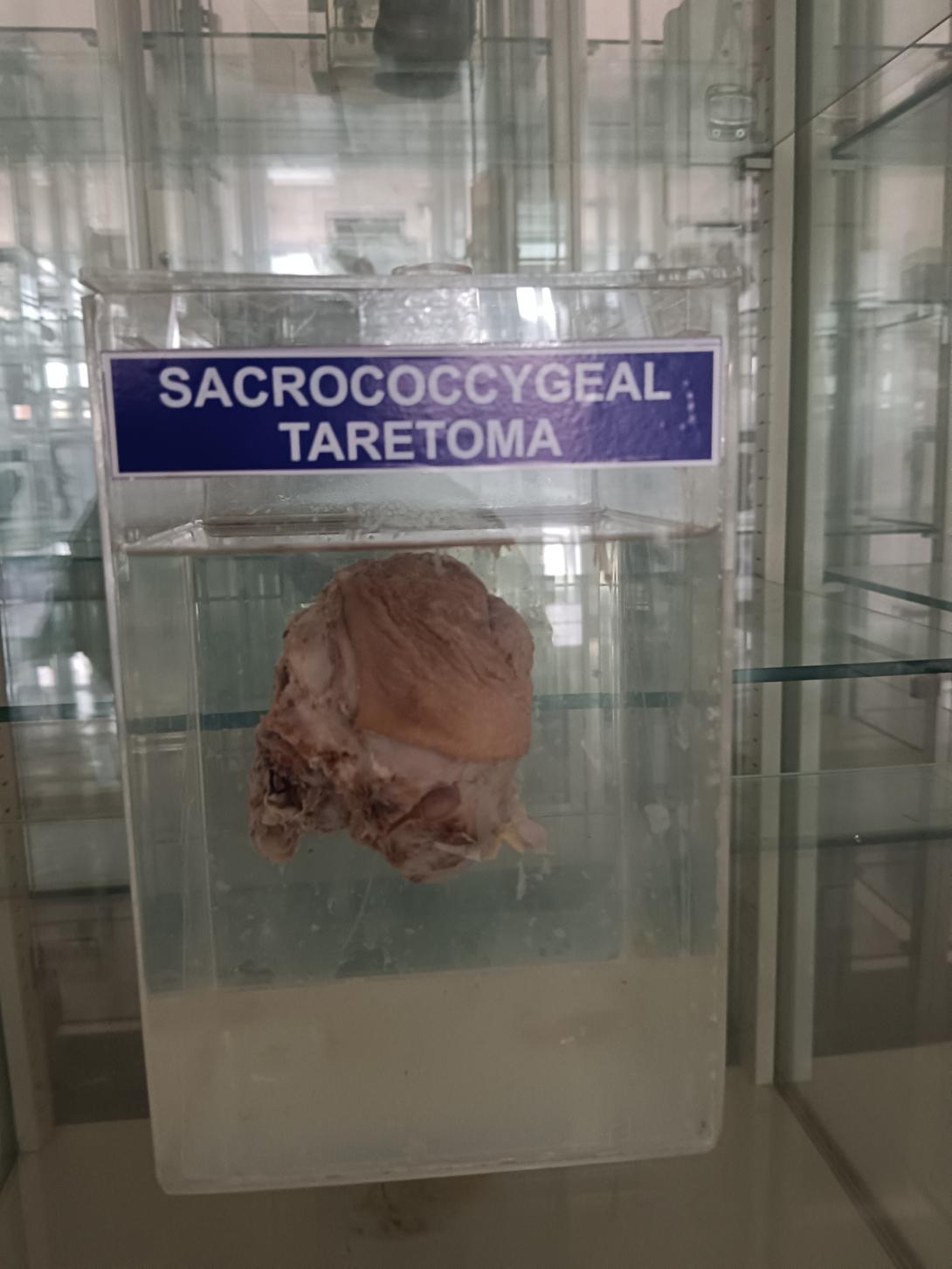Sacrococcygeal teratoma is a type of tumor that develops at the base of the spine, in the sacrococcygeal area. It is the most common tumor found in newborns, with a reported incidence of approximately 1 in 35,000 to 40,000 live births.
Sacrococcygeal teratomas are thought to arise from germ cells, which are cells that give rise to eggs or sperm. These tumors can contain a variety of different tissues, including hair, teeth, bone, cartilage, muscle, and nerve tissue. The tumors can vary in size and can be either benign or malignant.
Symptoms of sacrococcygeal teratoma may include a visible lump or mass at the base of the spine, which may be soft or firm to the touch. Other symptoms may include constipation, urinary problems, or difficulty walking.
The diagnosis of sacrococcygeal teratoma is typically made through imaging studies, such as ultrasound or MRI, and confirmed with a biopsy. Treatment for sacrococcygeal teratoma typically involves surgical removal of the tumor. In some cases, chemotherapy or radiation therapy may also be needed.
The prognosis for sacrococcygeal teratoma depends on several factors, including the size and location of the tumor, as well as whether the tumor is benign or malignant. With appropriate treatment, the majority of cases have a favorable outcome, although some cases may be associated with long-term complications.

